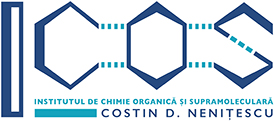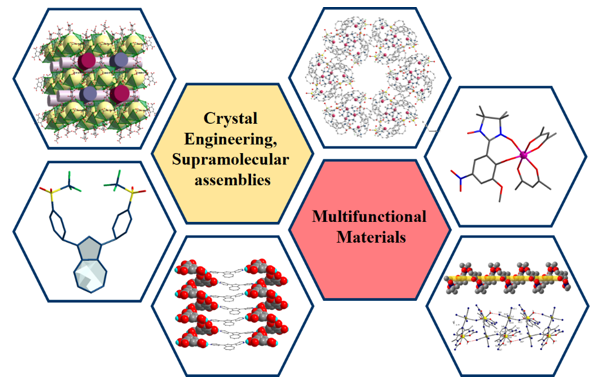
Research in our laboratory combines classical organic chemistry, supramolecular organic synthesis, coordination chemistry and crystal engineering at interface of fundamental research and material science.
Research topics:
Supramolecular assemblies developed through covalent and non-covalent interactions; design and synthesis of angular tectons employed in construction of 1-D, 2-D, and 3-D architectures.
Molecular magnetic materials designed using organic ligands selected rationally in order to favor magnetic interactions between metallic and/or organic spin carriers.
Molecular photoswitchers – design and synthesis of stimuli-responsive molecular materials by combining the photochromic units with azulene derivatives for development of smart switches.
Multifunctional materials – crystal engineering of electroactive organic and metal-organic cages; rational design of metal-organic frameworks for hydrogen isotope separation; design of extended π-conjugated systems for recognition of cationic and/or anionic species.
Covalent functionalization of graphenes for development of innovative electrodes within proton-exchange membrane fuel cell, by employing electrochemically active azulene moieties.
Heterospin molecular complexes - containing nitronyl nitroxide stable and persistent organic radicals and paramagnetic metal ions.


Fine organic synthesis and physico-chemical characterization of π-conjugated azulene-systems with non-linear optical properties or photoswitching ability; crystal engineering of supramolecular organic systems and metal-organic porous materials, self-assembling of electroactive organic building blocks; synthesis of organic cages and covalent organic frameworks; synthesis of fluorescent organic sensors able to recognize anionic/cationic species; design and synthesis of biologically active compounds.
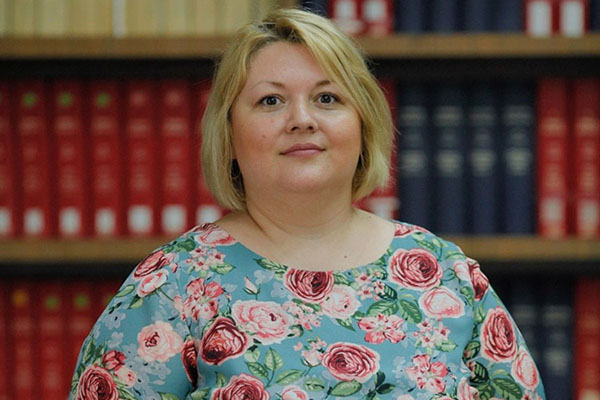
Structural analysis of hydrazones comprising of azulene moieties, suitable for recognition of toxic cations (Hg, Cd, Pb), as well as of hydrazides obtained through association of azulene moieties with thioureido/ureido fragments, for the development of biological sensors using NMR spectroscopy; NMR spectroscopy studies for structural determination and interaction studies between chemical and biochemical compounds.

Synthesis and physico-chemical characterization of coordination compounds, ligand synthesis and coordination chemistry; development of novel supramolecular metal-containing assemblies; electrochemical investigations of multifunctional materials; host-guest investigations.
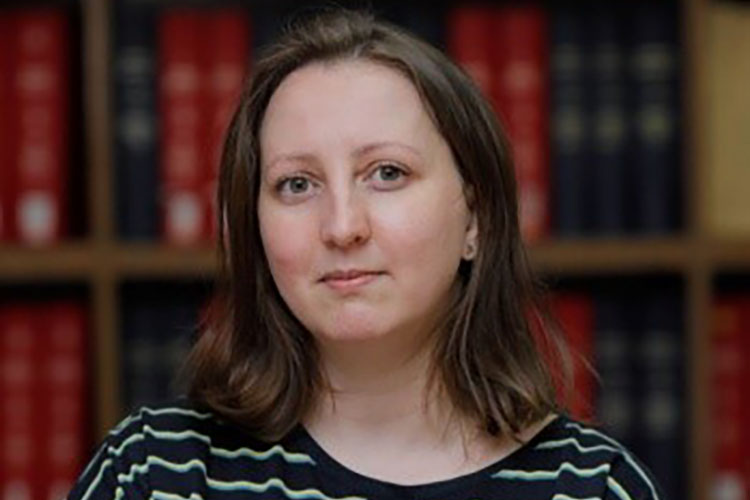
Organic synthesis of ligands and of coordination compounds; crystal engineering of covalent and non-covalent supramolecular assemblies, advanced physico-chemical characterization and spectroscopic investigations of multifunctional materials.

Research activities involving the synthesis and characterisation of mono- and polynuclear coordination compounds of d/f metals with Schiff base ligands.

Synthesis of organic compounds, stable organic nitronyl nitroxide radicals, polynuclear and heterospin coordination complexes (2p-3d, 2p-4f, 3d-4f, 2p-3d-4f, and 3d-4f-5d). Physico-chemical characterization of organic ligands and their coordination compounds. Crystal engineering. Single crystal and powder X-ray diffraction.
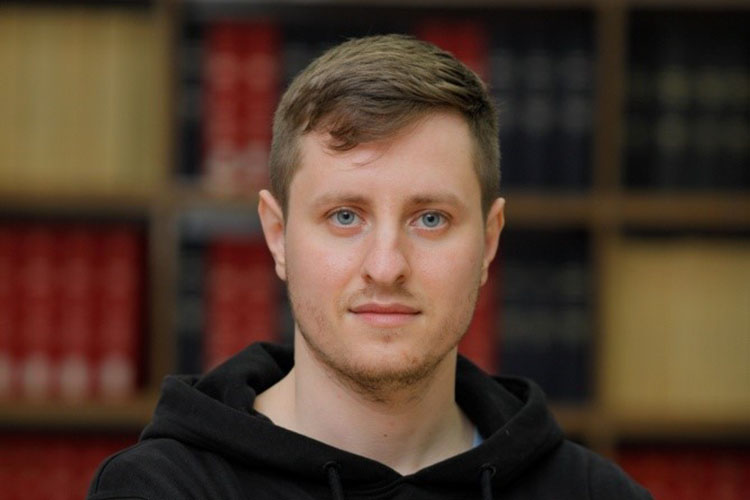
Design and synthesis of ligands and coordination compounds; physico-chemical characterization of molecules using standard techniques; beginner in the art of crystallization.

Synthesis of organic ligands and coordination compounds. Physico-chemical and spectroscopic characterization of ligands and their coordination products. Characterization of coordination compounds using single crystal and powder X-ray Diffraction.
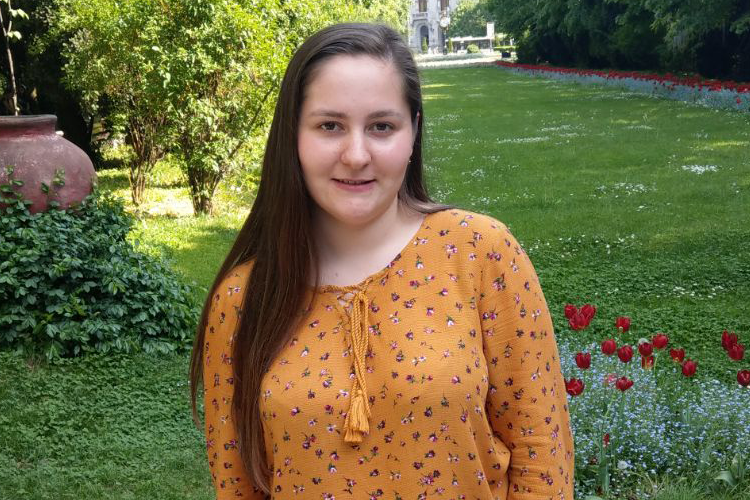
Design and synthesis of coordination compounds with Schiff-base ligands: physico-chemical characterization of the obtained systems.
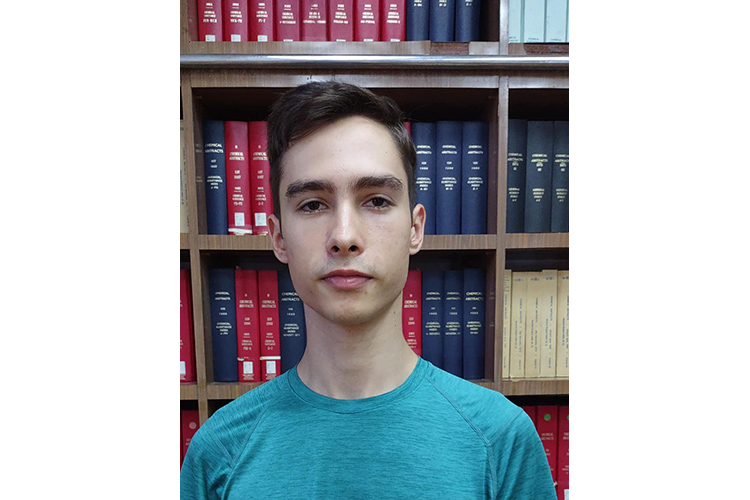
Synthesis and characterization of ligands and coordination compounds based on Mannich and Schiff reactions and nitronyl nitroxide radicals.

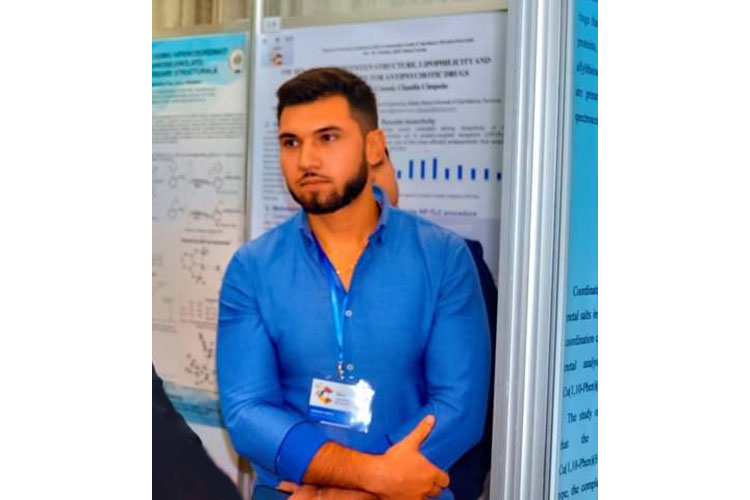
Design and synthesis of organic switchers, of ligands used in the synthesis of coordination compounds possessing interesting photochemical properties. Physico-chemical characterization of the obtained compounds.
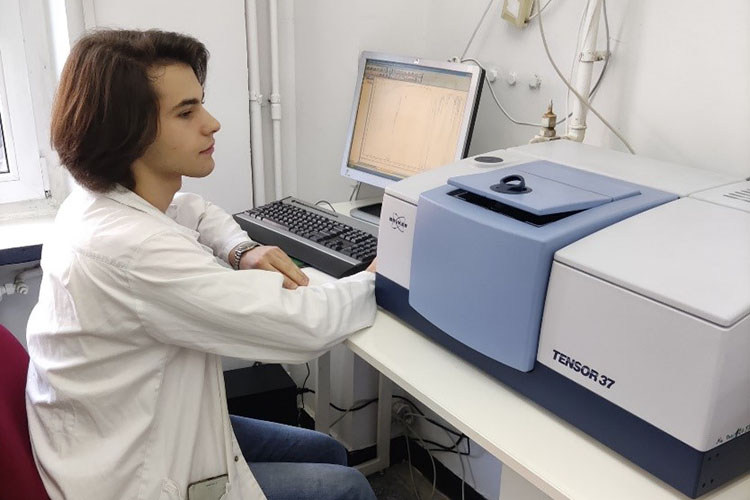
Organic synthesis of ligands, synthesis of oligonuclear complexes, coordination polymers and supramolecular systems; spectroscopic investigations.
| Photo credit for all: Traian Pasatoiu |
Simona Nica - Guest editor for Frontiers in Chemistry, theme collection “Advances in the field of smart photochromic materials containing versatile molecular photoswitches” - https://www.frontiersin.org/research-topics/39791/advances-in-the-field-of-smart-photochromic-materials-containing-versatile-molecular-photoswitches
Covers:
“One-dimensional coordination polymers constructed from di- and tri-nuclear {3d–4f} tectons.A new useful spacer in crystal engineering: 1,3-bis(4-pyridyl)azulene”, A. E. Ion, S. Nica, A.M. Madalan, C. Maxim, M. Julve, F. Lloret, M. Andruh, CrysEngComm, 2014, issue 3;
“An original 3D coordination polymer constructed from trinuclear nodes and tetracarboxylato spacers”, A. S. Dinca, A. Dogaru, A. E. Ion, S. Nica, D. Dumitrescu, S. Shova, F. Lloret, M. Julve, M. Andruh, CrysEngComm, 2021, issue 6;
"Halogen bonded supramolecular assemblies constructed from azulene derivatives and perfluorinated di-/triiodobenzenes, A. Dogaru, A. A. Apostol, C. Maxim, M. Raduca, A. S. Novikov, A. Nicolescu, C. Deleanu, S. Nica, M. Andruh, CrystEngComm, 2023, issue 37"
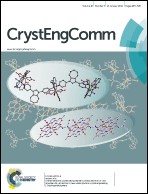 |
 |
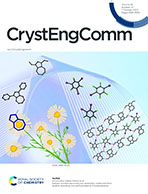 |
“New Cyanido-Bridged Heterometallic 3d-4f 1D Coordination Polymers: Synthesis, Crystal Structures and Magnetic Properties”, D. Dragancea, Gh. Novitchi, A. M. Mădălan, M. Andruh, Magnetochemistry, 2021, Volume 7, Issue 6.
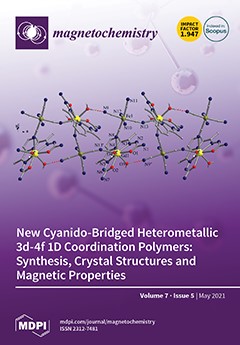
1. Design, Synthesis, and Biological Evaluation of New Azulene-Containing Chalcones, D. Bala, L.-I. Jinga, M. Popa, A. Hanganu, M. Voicescu, C. Bleotu, L. Tarko, S. Nica, Materials, 2022, 15, 1629, DOI: 10.3390/ma15051629.
2. Trinuclear cyanido-bridged MII-WV complexes (M= Mn, Co): Crystal structures and magnetic properties, D. Dragancea, Gh. Novitchi, A. M Madalan, M.-G. Alexandru, S. Shova, M. Andruh, Polyhedron, 2022, 220, 115839, DOI: 10.1016/j.poly.2022.115839.
3. A New Nitronyl-nitroxide Ligand for Designing Binuclear LnIII Complexes: Syntheses, Crystal Structures, Magnetic and EPR Studies, M. Răducă, D. O. T. A. Martins, C. A. Spinu, M. Hillebrand, F.Tuna, G. Ionita, A. M. Madalan, C. Lecourt, J.-P. Sutter, M. Andruh, Eur. J. Inorg.Chem. 2022, DOI: 10.1002/ejic.202200128
4. An original 3D coordination polymer constructed from trinuclear nodes and tetracarboxylato spacers, A. S. Dinca, A. Dogaru, A. E. Ion, S. Nica, D. Dumitrescu, S. Shova, F. Lloret, M. Julve, M. Andruh, CrystEngComm., 2021, 23, 1332, DOI: 10.1039/D0CE01667E
5. Synthesis, crystal structure, magnetic, spectroscopic, and theoretical investigations of two new nitronyl-nitroxide complexes, C. A. Spinu, C. Pichon, G. Ionita, T. Mocanu, S. Calancea, M. Raduca, J. P. Sutter, M. Hillebrand, M. Andruh, J. Coord. Chem. 2021, 74, 279, DOI:10.1080/00958972.2021.1871900
6. Organic co-crystals of 1,3-bis (4-pyridyl) azulene with a series of hydrogen-bond donors, A. E. Ion, A. Dogaru, S. Shova, A. M. Madalan, O. Akintola, S. Ionescu, M. Voicescu, S. Nica, A. Buchholz, W. Plass, M. Andruh, CrystEngComm., 2018, 20, 4463, DOI: 10.1039/C8CE00945G
7. Synthesis and properties of fluorescent 4′-azulenyl-functionalized 2, 2′: 6′, 2″-terpyridines, A. E. Ion, L. Cristian, M. Voicescu, M. Bangesh, A. M. Madalan, D. Bala, C. Mihailciuc, S. Nica, Beilstein J. Org. Chem., 2016, 12, 1812, DOI: 10.3762/bjoc.12.171
8. Visible-light triggered photoswitching systems based on fluorescent azulenyl-substituted dithienylcyclopentenes, E. A. Dragu, A. E. Ion, S. Shova, D. Bala, C. Mihailciuc, M. Voicescu, S. Ionescu, S. Nica, RSC Adv., 2015, 5, 63282 , DOI: 10.1039/C5RA11974J
9. Two-Dimensional Coordination Polymers Constructed Using, Simultaneously, Linear and Angular Spacers and Cobalt(II) Nodes. New Examples of Networks of Single-Ion Magnets, A. E. Ion, S. Nica, A. M. Madalan, S. Shova, J. Vallejo, M. Julve, F. Lloret, M. Andruh., Inorg. Chem., 2015, 54, 16, DOI: 10.1021/ic5025197
10. A chimeric design of heterospin 2p–3d, 2p–4f, and 2p–3d–4f complexes using a novel family of paramagnetic dissymmetric compartmental ligands, A. A. Patrascu, S. Calancea, M. Briganti, S. Soriano, A. M. Madalan, R. A. Allao Cassaro, A. Caneschi, F. Totti, M. G. F. Vaz, M. Andruh, Chem Commun., 2017, 53, 6504, DOI: 10.1039/C7CC03236F
11. SMM behavior tuned by an exchange coupling LEGO® approach for chimeric compounds: First 2p-3d-4f hetero-tri-spin complexes with different metal ions bridged by one aminoxyl group, A. A. Patrascu, M. Briganti, S. Soriano, S. Calancea, R. A. Allão Cassaro, F. Totti, M. G. F. Vaz, M. Andruh, Inorg. Chem., 2019, 58, 13090, DOI: 10.1021/acs.inorgchem.9b01998.
12. One-dimensional coordination polymers constructed from binuclear 3d–4f nodes and isonicotinato spacer, A. A. Patrascu, S. Calancea, R. A. Allão Cassaro, S. Soriano, A. M. Madalan, C. Maxim, M. A. Novak, M. G. F. Vaz, M. Andruh, CrystEngComm, 2016, 18, 4779. DOI: 10.1039/C6CE00729E
Bringing together quantum sieving process and new metal-organic frameworks synthesis to develop a new hydrogen isotope separation- PN-III-P2-2.1-PED-2019-2079 (contract 469PED/2020) - https://www.chimie.unibuc.ro/cercetare/anorganica/HYSO-MOF/HYSO-MOF.pdf
Project abstract: Development of new cost-effective, non-polluting technology for isotopologue sieving using porous metal-organic framework (MOF) assembled starting from rationally selected building blocks is highly desirable in modern material science.
Recently, MOFs systems have been investigated for their H2/D2 separation ability, explained through a chemical quantum sieving (CAQS) mechanism. In contrast to the vast majority of porous coordination polymers reported so far, the 3D MOF structure assembled in our group starting from binuclear nodes, hexamethylenetetramine and mandelic acid as spacers, 3∞[Cu2(mand)2(hmt)]·H2O, was synthesized using classical reaction conditions and cheap materials.
Moreover, this structure exhibits permanent porosity, thermal stability and due to its texture, good capability of H2 capturing and storage. Taking into consideration these important properties, we propose this compound as candidate in development of a hydrogen isotope separation technology. In quantum sieving, the pore size plays an important role in determining the diffusion kinetics and thereby overall separation process. In this regard, we intent to first scrutinize the ability of Zn(II) metal ion as metallic center within an isostructural metal-organic framework to efficiently separate the hydrogen isotopes. Secondly, we will focus on the modification of pore dimension and of termic stability through screening of organic components, in order to develop families of MOFs with structures and properties that can be predicted a priori. Ultimately, for the most efficient porous material we propose to develop an innovative technology using a setup that allows the analysis of thermal desorption at low temperatures (down to 20 K) by mass spectrometry, a setup that is unique in Romania, assembled at ICSI Rm. Valcea Institute.
